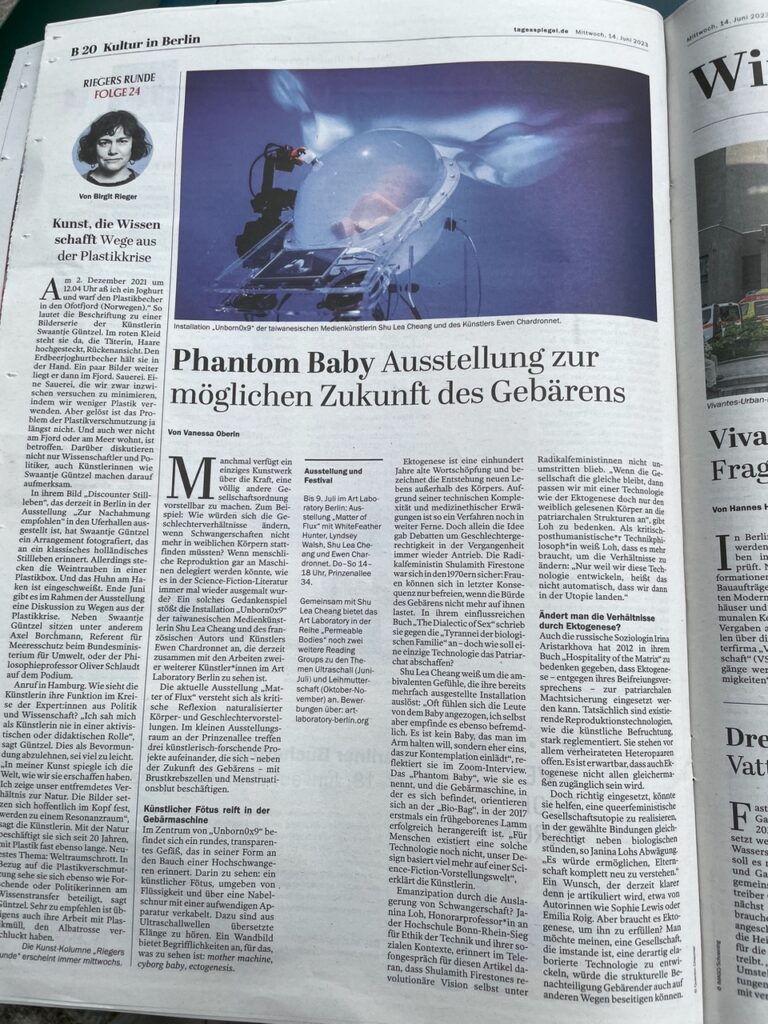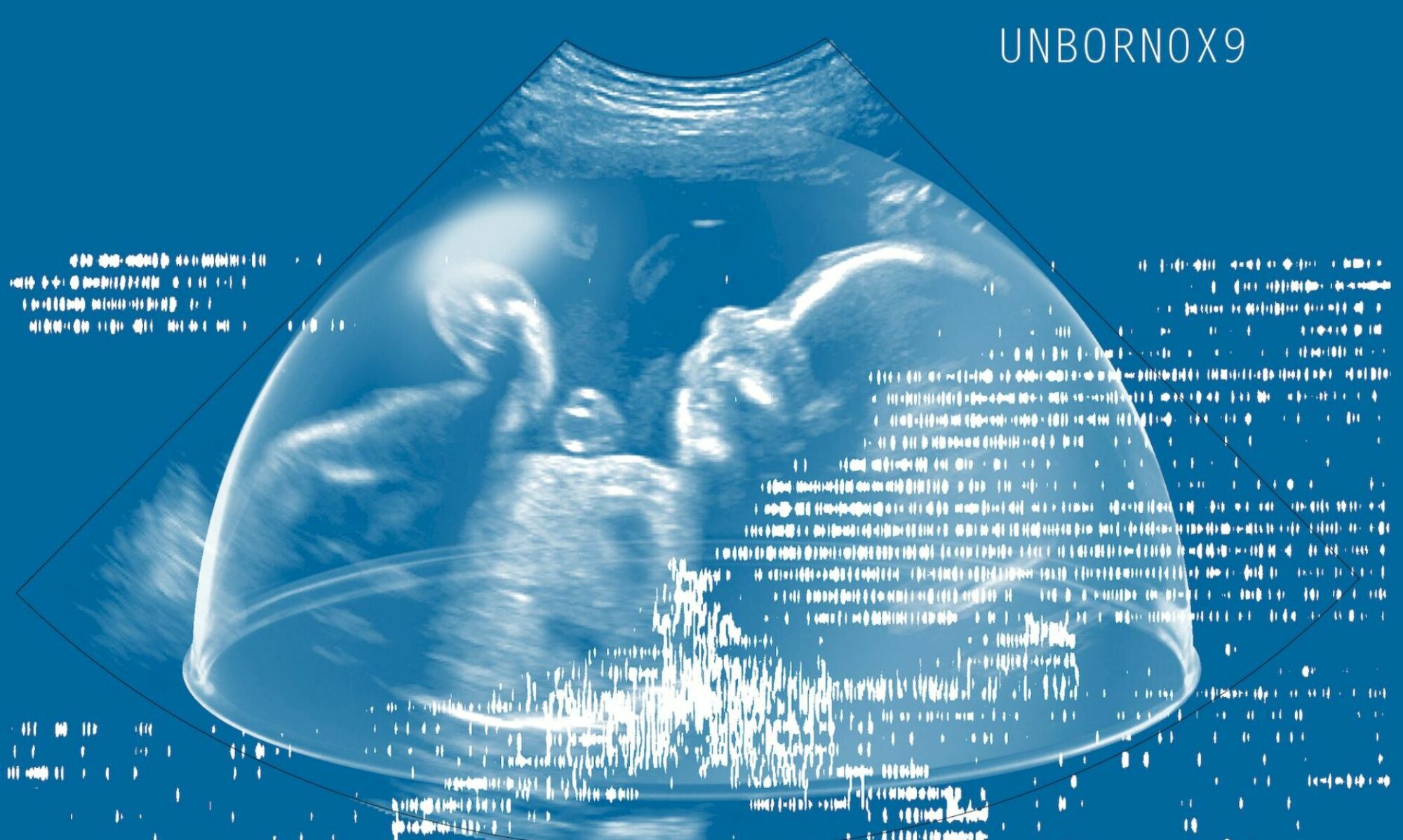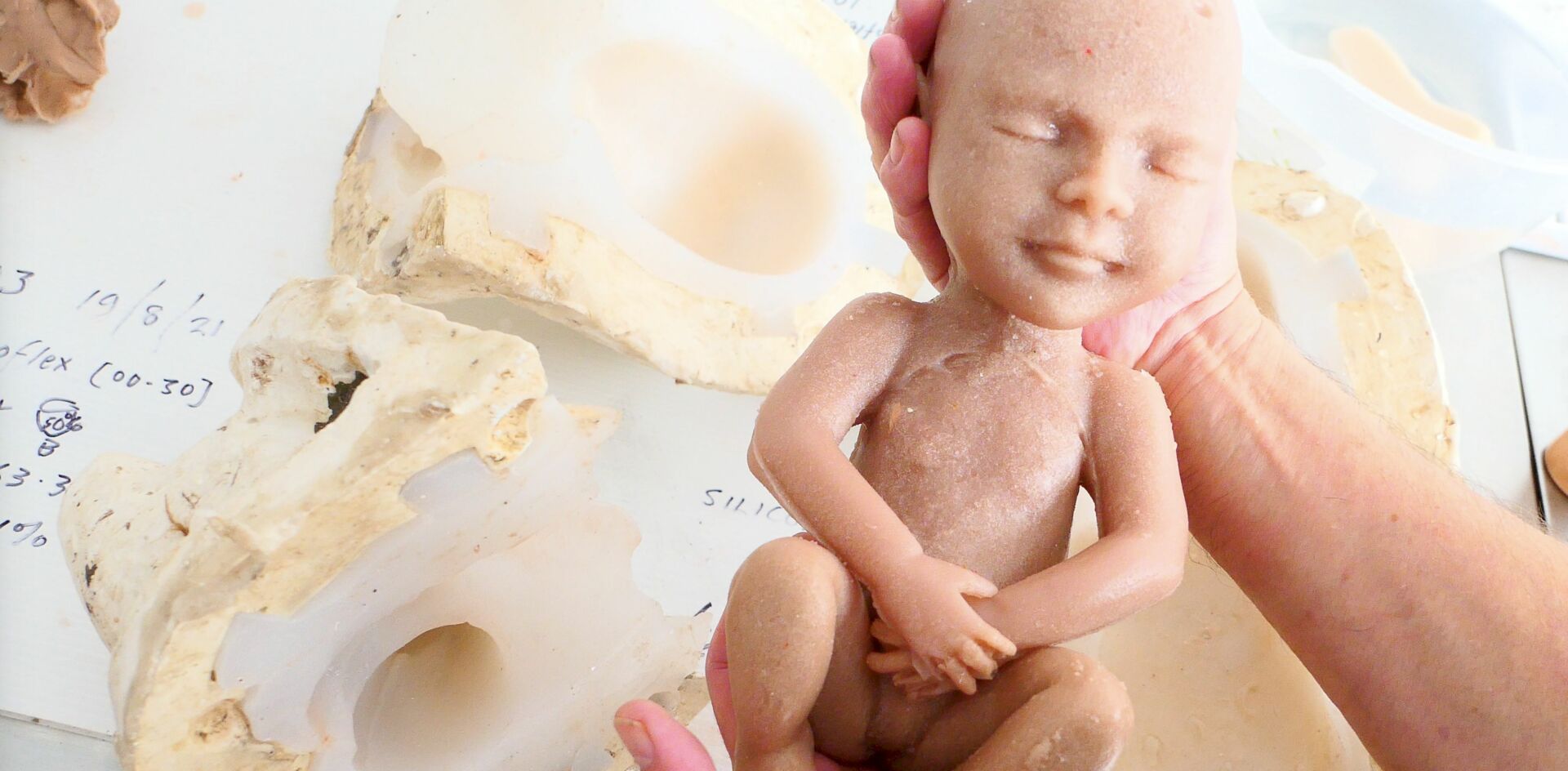2023
- Liara Roux, NY, participant of the Surrogacy reading group organised by Art Laboratory Berlin diuring the « Permeable Bodies » series, illustrate with UnbornOx9 her article « Mommy Issues » in Spike Art Magazine.
- Culture section of Berlin’s daily newspaper Tagesspiegel – June 14 – review the exhibition « Matter of Flux » and series « Permeable Bodies » and the Reading Group « ECTOGENESIS » with Shulea Cheang and Ewen Chardronnet as well the Reading Group leader Elizabeth Chloe Romanis.

- Unborn0x9 at Matter of Flux, Art Laboratory Berlin in CLOT magazine: https://clotmag.com/news/insight-matter-of-flux-reflecting-on-nature-matter-health-of-female-nonbinary-bodies
2022
- UNBORN0x9 at Reproduction Otherwise, Mu Art Space, Eindhoven, Nl
Publication of Ewen Chardronnet’s text, « UNBORN0X9: from homunculus to partial ectogenesis » in English and Dutch:
https://www.mu.nl/en/txt/unborn0x9-from-homunculus-to-partial-ectogenesis
https://www.mu.nl/nl/txt/unborn0x9-from-homunculus-to-partial-ectogenesis
- ART4MED: Art Meets Health and Biomedical Research [final publication].
ART4MED was a 2 years project (2021-2022) co-funded by the Creative Europe programme of the European Union. 5 partners – ART2M (Fr), Bioart Society (Fi), Kersnikova Institute (Si), Waag FutureLab (Nl), Laboratory for Aesthetics and Ecology (Dk) – united around their common interest to experiment and disseminate collaborations between hands-on medical humanities and investigative art methodologies. In 2021 and 2022, the consortium proposed residencies, symposiums, talks, co-creative methodology workshops, online collaborations, hands-on sessions, exhibitions, and a final publication and Open Source Body festival in Paris.
UNBORN0x9 was one of the 5 projects in long-term residencies:
2021
- Residency at Antre Peaux – August
Baby Fabrication by Svar Simpson [report pdf]
- Fabricating echogenic phantoms at echOpen – April
Biomaterial Research by Vivien Roussel [report pdf]
2020
- Installation sketch by Vivien Roussel [sketch]
- UNBORN0x9 Booklet for Science Gallery London exhibition.
2017-2020
- Wiki research by Catherine Lenoble & Labomedia:
https://ressources.labomedia.org/unborn
https://ressources.labomedia.org/echopen_technique
2015 -2021
BACKGROUND
Ectogenesis, considered as a test tube baby fully developed in an out-of-the-body gestation, poses different ethical challenges: end of pregnancy but also the possible end of the privileged relationship between mother and child; complete equality of life between women and men; the nature of the emotional bonds for a child whose gestation took place in a machinic device; evolution of mores in a society where sexuality and reproduction are separated; transformation of the notions of maternity and paternity, of couple and of family; development of same-sex parenting; risk of a new form of commodification of the human body.
The first evocation of a possible ectogenesis is attributed to the British biologist and geneticist John Haldane who elaborated the project of a device allowing, in mammals, extracorporeal pregnancy, the growth of an embryo and then a fetus outside the body of a female organism. Haldane’s ideas on ectogenesis received praise from a number of fellow progressive intellectuals, including Dora Russell Black, the wife of Bertrand Russell. In 1925, she wrote her own essay on the future of science in which she defended an emancipatory conception of ectogenesis quite similar to Haldane’s from a feminist standpoint. The very idea of artificial gestation would allow women to imagine a different social reality, she said, one in which they did not have to bear children, and thus were not required to perform a maternal role that kept them servile, house-bound, and outside the public sphere. Concerned about the intersection of ectogenesis and eugenics, Aldous Huxley takes up in The Brave New World (published in 1932) the ideas of Haldane and Russell. In his novel, Aldous Huxley announces a world where babies are made in test tubes, where the word « parent » has become obscene and banned since the appearance of ectogenesis that puts an end to « viviparous reproduction ».
In 1970, the radical feminist Shulamith Firestone took up Haldane and Russell’s thesis in her book The Dialectic of Sex, arguing that the only way to achieve true equality between men and women is to outsource pregnancy to machines. Like Haldane and Russell before her, she began to conceive of the replacement of women’s bodies with artificial wombs as the basis for a radical and utopian political movement—a mechanically-mediated women’s liberation.
Many papers were written to go towards ectogenesis since Haldane, but in 1996 Juntendo University brought the artificial womb into reality. Their system gestated fourteen goat fetuses that were then placed into artificial amniotic fluid under the same conditions as a mother goat. The team succeeded in keeping the goat fetuses in the system for three weeks.
The field has entered a new acceleration phase in the recent years. In October 2014, it was announced that, for the first time, a healthy baby had been born to a uterine transplant recipient in Sweden, in an operation led by Dr. Brännström, Professor of Obstetrics and Gynaecology at the University of Gothenburg. In April 2017 at the Children’s Hospital of Philadelphia, an extremely premature lamb have been kept alive in a fluid filled artificial uterus for four weeks. In 2018-2019, the Eindhoven University of Technology in Netherlands started developing « Perinatal Life Support systems » or artificial womb “biobags” for human premature babies with the support of EU Horizon 2020 program, hoping to have the first prototype within five years.
The common vision of pregnancy has been increasingly challenged by the evolution of techno-medicine in these recent experiments. In this context, our artists collective, Future Baby Production, started to investigate and conceptualize the UNBORN0X9 (from still born of 0 month to 9 month complete cycle). Pregnancy is integrated into a high-tech vision of the body as a biotic component or cybernetic communication system. In treating a fetus as if it were outside a woman’s body, to make it visible, is a political act.
UNBORN0x9 in MAKERY.INFO:
https://www.makery.info/2016/12/06/echopen-et-makery-invitent-lartiste-shu-lea-cheang-en-residence/
https://www.makery.info/2017/04/11/shu-lea-cheang-et-echopen-hackent-lechographie-chez-labomedia/
https://www.makery.info/2018/01/23/festival-open-source-body-ouverture-en-images/
https://www.makery.info/2018/01/30/open-source-body-a-corps-ouvert/
https://www.makery.info/en/2018/01/30/open-source-body-a-corps-ouvert/

